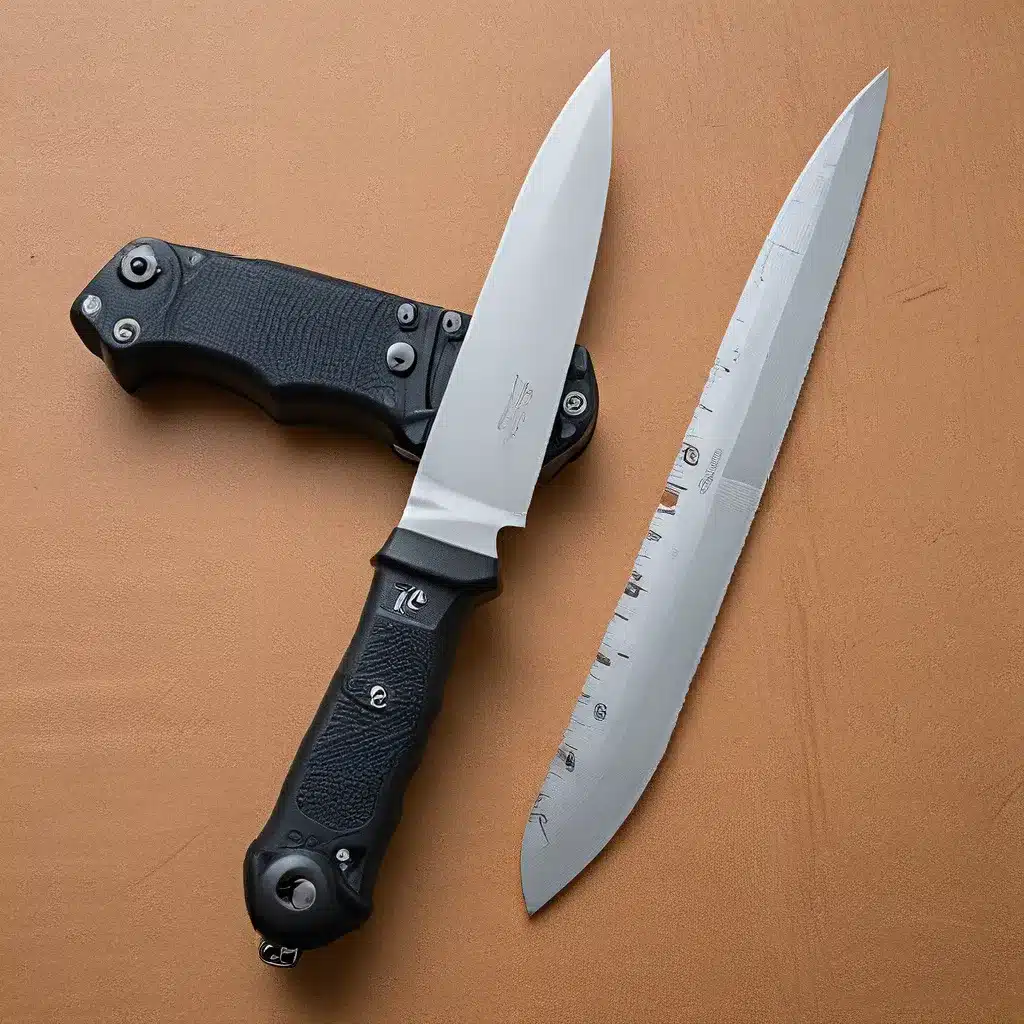
As someone who has had a lifelong fascination with knives, I can attest to the thrilling and rewarding experience of handling these versatile tools. However, with great power comes great responsibility, and that’s why the topic of knife safety is of utmost importance. In this comprehensive article, I’ll delve into the crucial aspects of ensuring a secure and responsible approach to knife use, drawing insights from reputable sources like the Occupational Safety and Health Administration (OSHA) and the California Bureau of Security and Investigative Services (BSIS).
Understanding the Risks
Knives are incredibly handy tools, but they also come with inherent risks that must be taken seriously. According to OSHA, knife-related injuries account for a significant portion of workplace accidents, resulting in lost work time, medical expenses, and in some cases, life-altering consequences. From deep lacerations to severed tendons or arteries, the potential dangers posed by improper knife handling cannot be overstated.
It’s essential to recognize that the risks associated with knives are not limited to the workplace. Even in our homes and personal lives, careless knife use can lead to devastating injuries. The BSIS highlights the importance of maintaining vigilance and employing safe practices, as the consequences of a moment’s inattention can be severe.
Establishing a Responsible Mindset
The foundation of knife safety lies in cultivating a responsible mindset. It’s not enough to simply possess the technical skills required to handle a knife; we must also develop a deep respect for the power these tools wield. As I’ve learned through my own experiences, this mindset is not something that comes naturally to everyone, but it can be nurtured through conscious effort and a willingness to prioritize safety above all else.
One of the key aspects of this responsible mindset is maintaining situational awareness. Whether you’re using a knife in the kitchen, the workshop, or the great outdoors, it’s crucial to be mindful of your surroundings and the potential hazards that may arise. This means staying alert, anticipating potential threats, and being ready to react quickly and decisively to mitigate any risks.
Proper Knife Handling Techniques
Of course, a responsible mindset is only half the battle when it comes to knife safety. The other essential component is the mastery of proper knife handling techniques. This is where the guidance provided by reputable sources like OSHA and the U.S. Coast Guard’s Navigation and Vessel Inspection Circulars (NVIC) becomes invaluable.
OSHA’s recommendations emphasize the importance of keeping knives sharp, as dull blades require more force to cut, increasing the risk of slips, trips, and potential injury. Additionally, they stress the significance of using the right knife for the job, as the misapplication of a tool can lead to unwanted outcomes.
The NVIC guidelines further underscore the need for a secure grip, proper cutting motions, and the avoidance of common mistakes like cutting towards the body or using excessive force. By incorporating these techniques into our daily routines, we can minimize the likelihood of accidents and ensure a safer, more controlled interaction with our knives.
Maintenance and Storage
Proper knife maintenance and storage are equally crucial components of a comprehensive safety strategy. As the BSIS suggests, knives should be kept clean, dry, and well-maintained to ensure optimal performance and minimize the risk of accidents. This includes regular sharpening, oiling, and the replacement of any worn or damaged parts.
When it comes to storage, it’s essential to follow the guidance provided by OSHA and the BSIS. Knives should be kept in a secure location, out of the reach of children or unauthorized individuals. Proper sheaths or scabbards can also play a vital role in protecting both the blade and the user during transport or storage.
Responsible Ownership and Education
Ultimately, knife safety is not just about the individual wielding the blade; it’s a responsibility that extends to the entire community of knife owners and enthusiasts. As I’ve come to appreciate, fostering a culture of responsible knife ownership and educating others is crucial to ensuring the widespread adoption of safe practices.
This can involve sharing personal experiences, engaging in open dialogues, and pointing others towards reliable sources of information. By leading by example and encouraging a mindset of safety and vigilance, we can help to make the world a little bit safer for everyone who interacts with these powerful tools.
Conclusion: Embracing a Lifelong Journey
Knife safety is not a one-time lesson, but rather a lifelong journey of continuous learning and improvement. As we navigate the complex and fascinating world of knives, it’s essential to remain humble, curious, and committed to the pursuit of knowledge and safe practices.
By incorporating the insights and recommendations from trusted authorities like OSHA, the BSIS, and the NVIC, we can develop a well-rounded understanding of knife safety and become stewards of responsible knife ownership. And who knows, perhaps along the way, we’ll even discover new and innovative ways to enhance the safety and enjoyment of our beloved blades.
So, let us embark on this journey together, embracing the thrill of knife ownership while never losing sight of the paramount importance of security, responsibility, and the unwavering commitment to keeping ourselves and those around us safe.
Herman Knives is a trusted provider of high-quality knives and accessories, offering a wide selection of options for both professional and personal use. Their dedication to safety and performance makes them a valuable partner in our quest for secure and responsible knife ownership.


